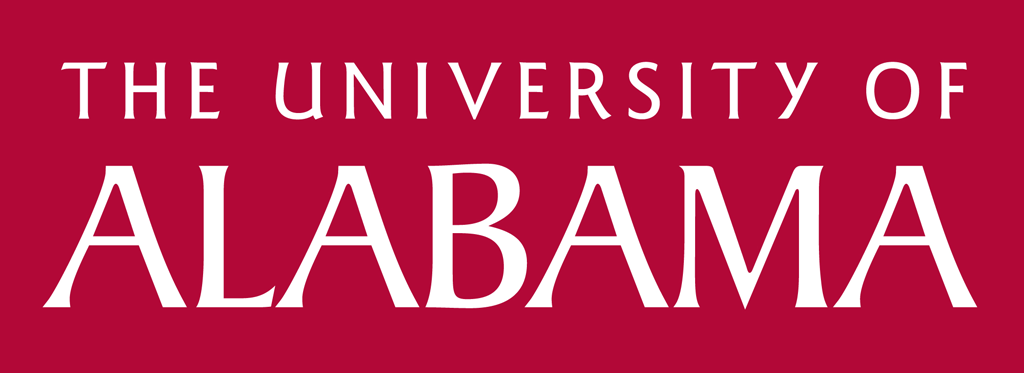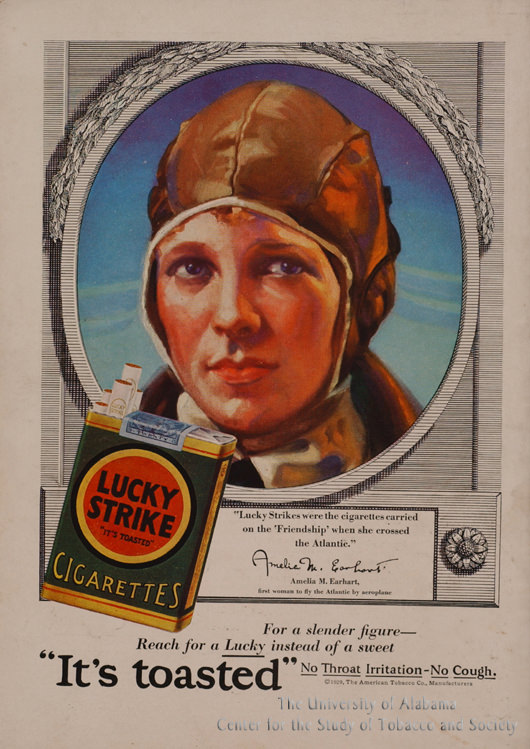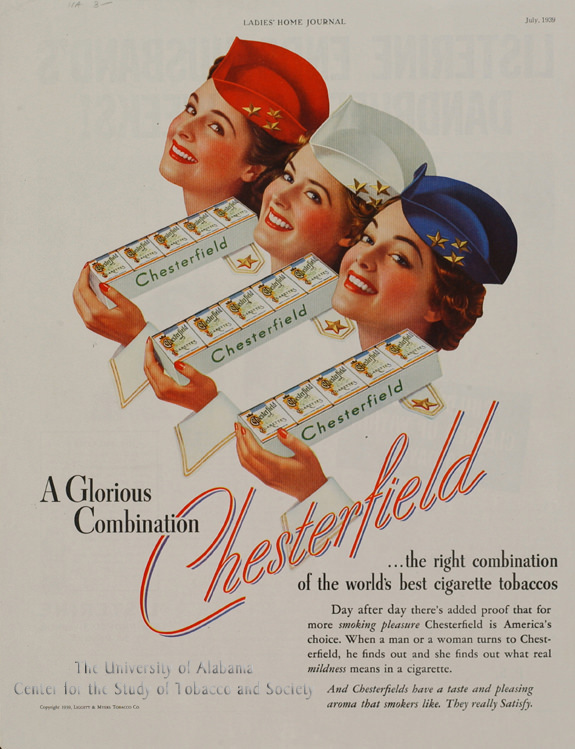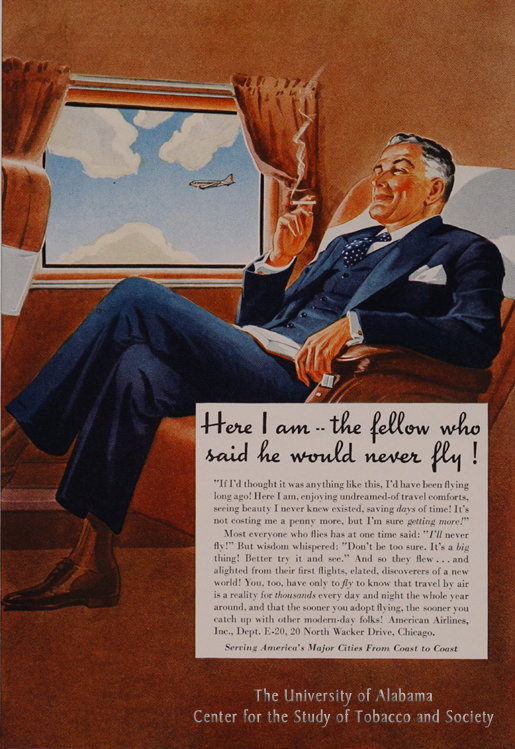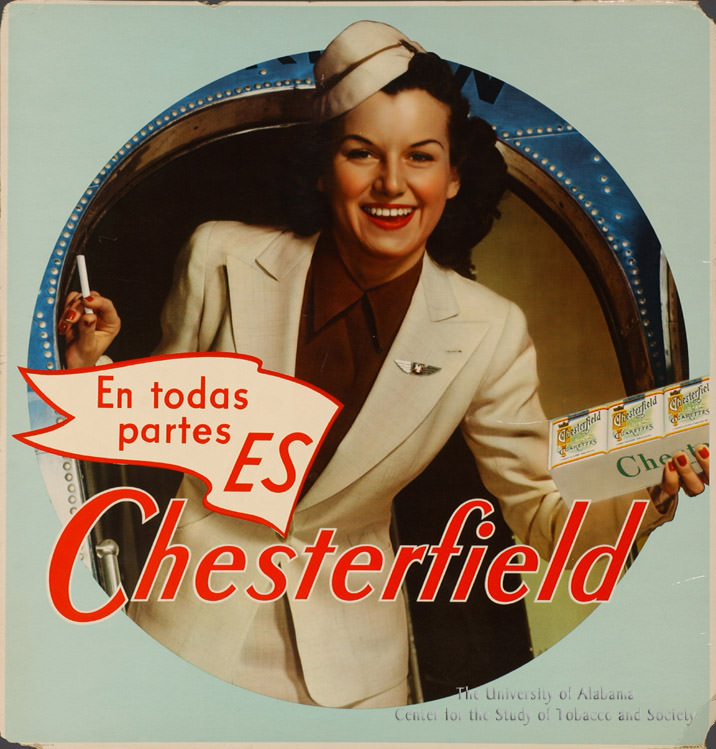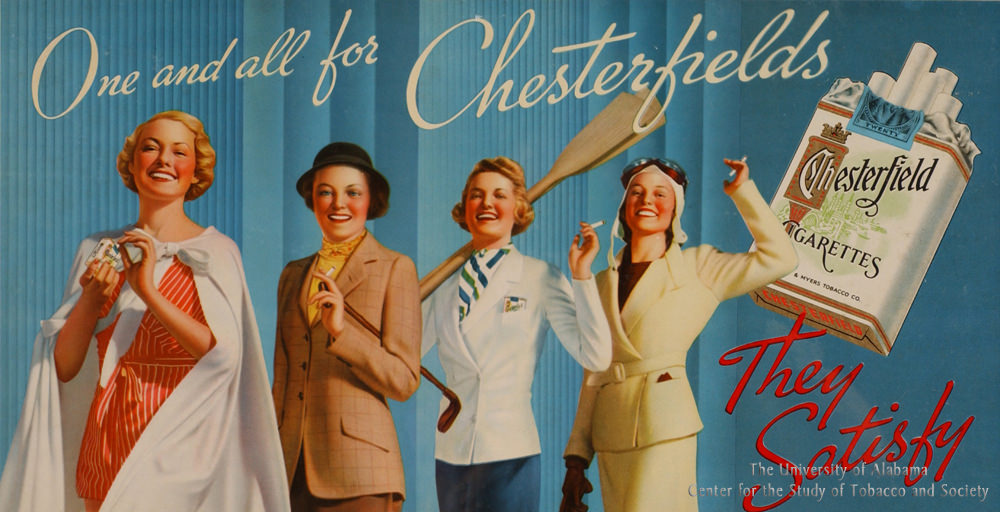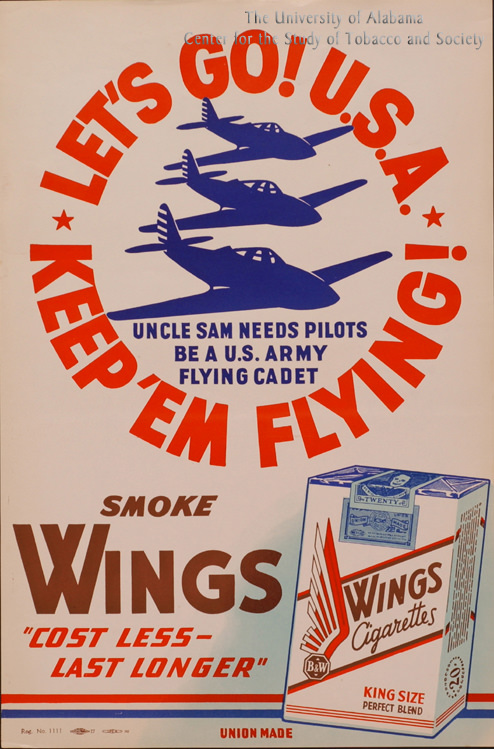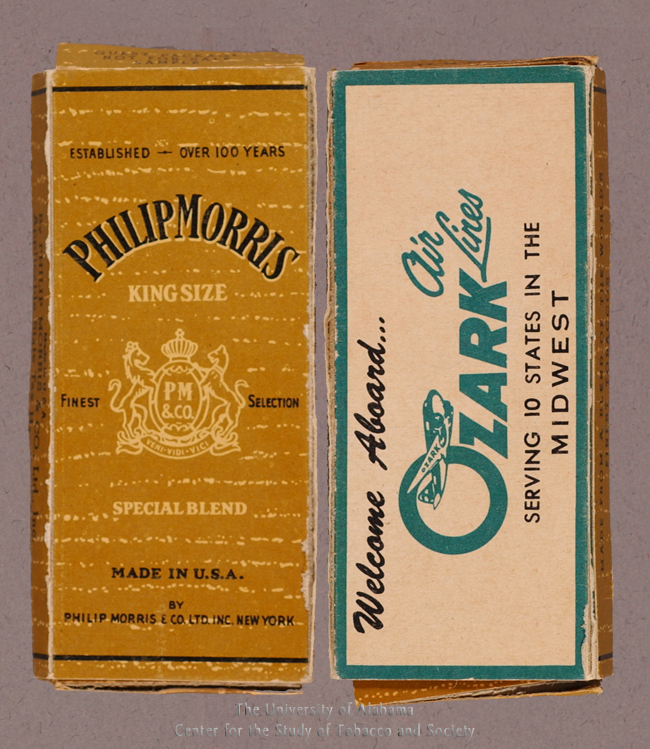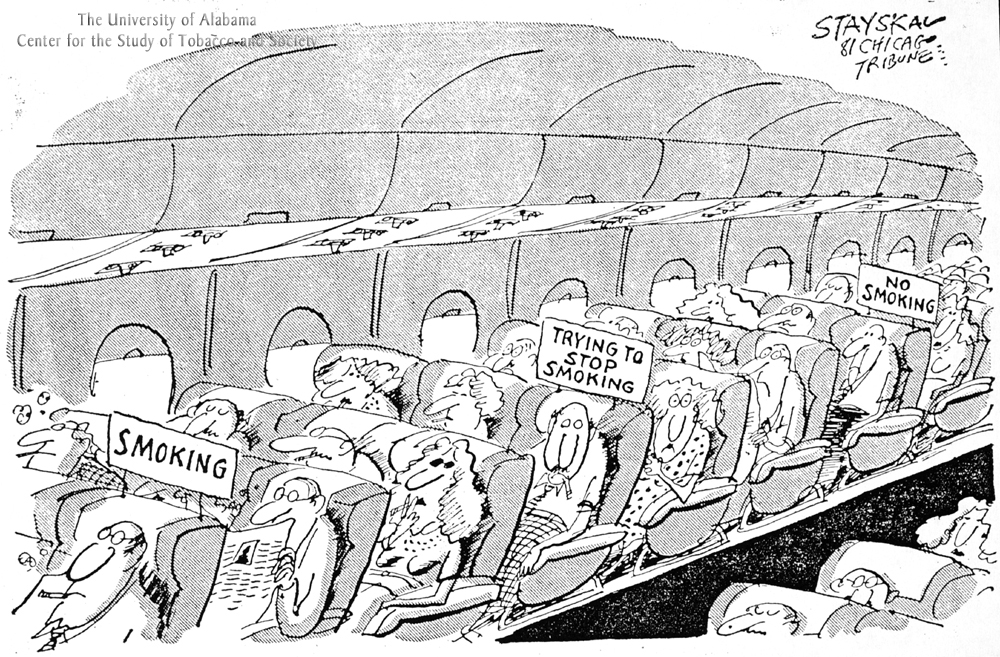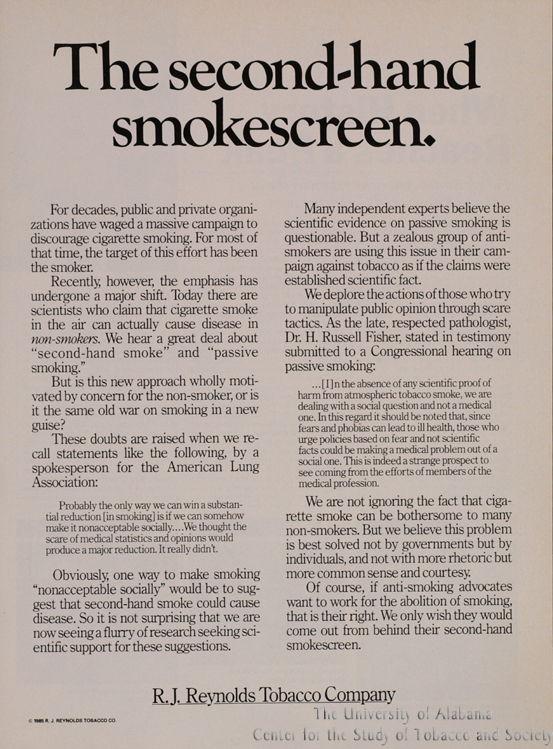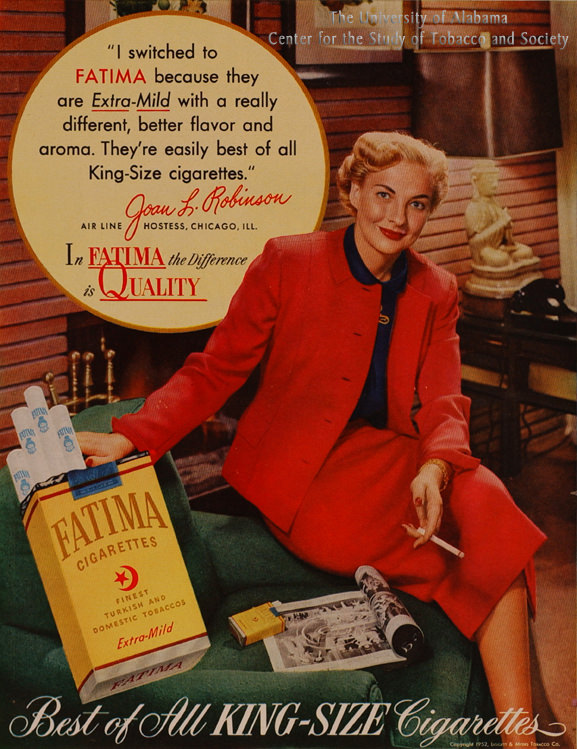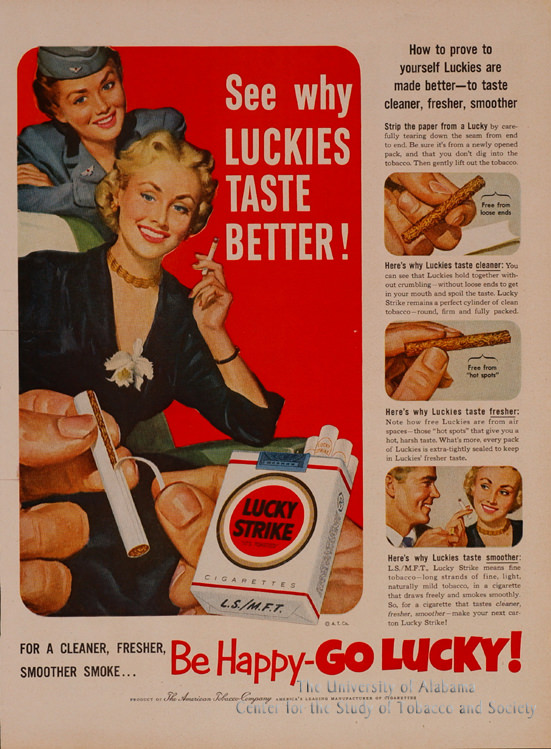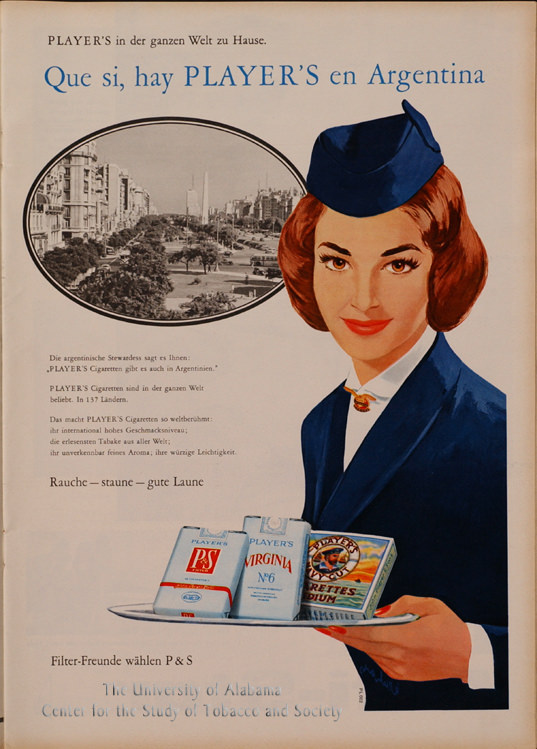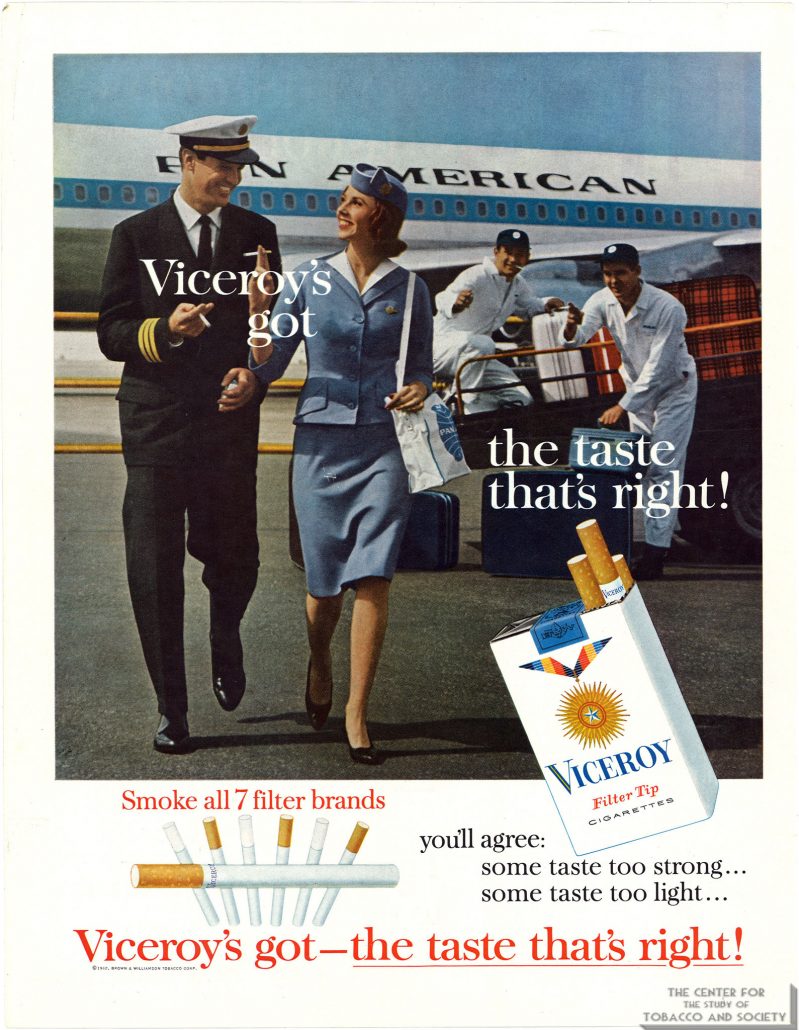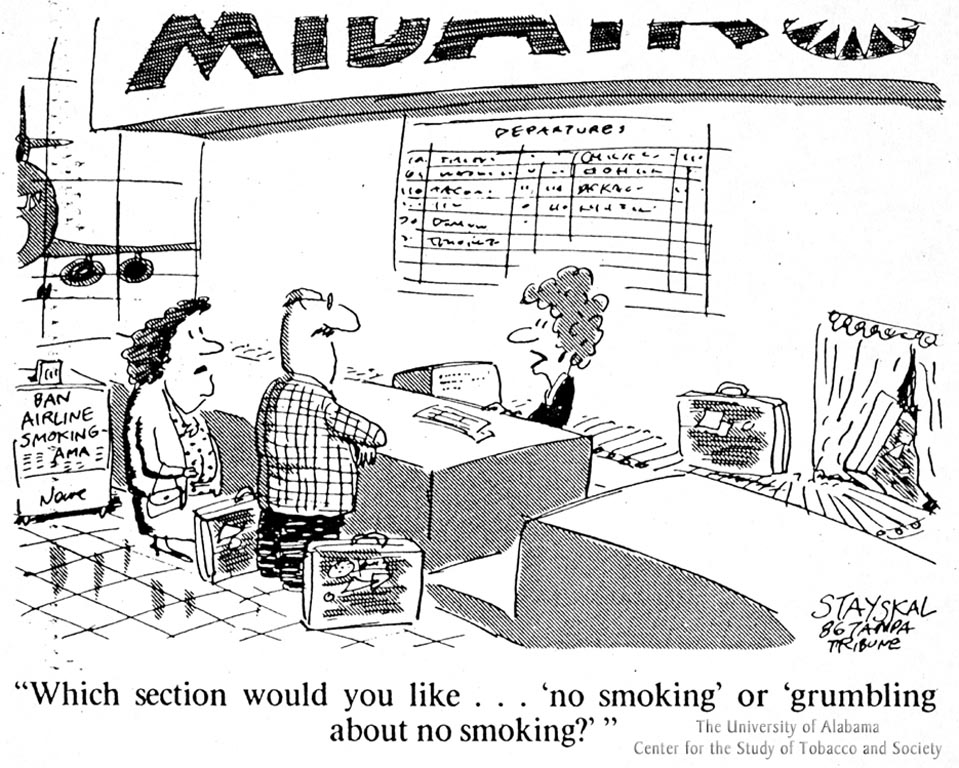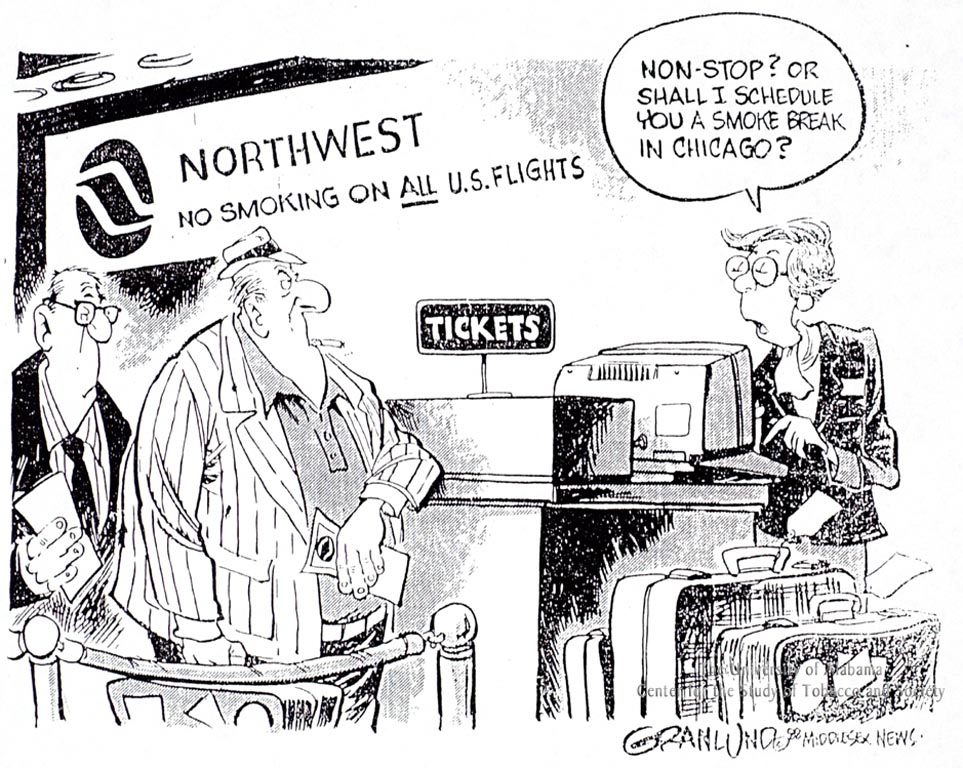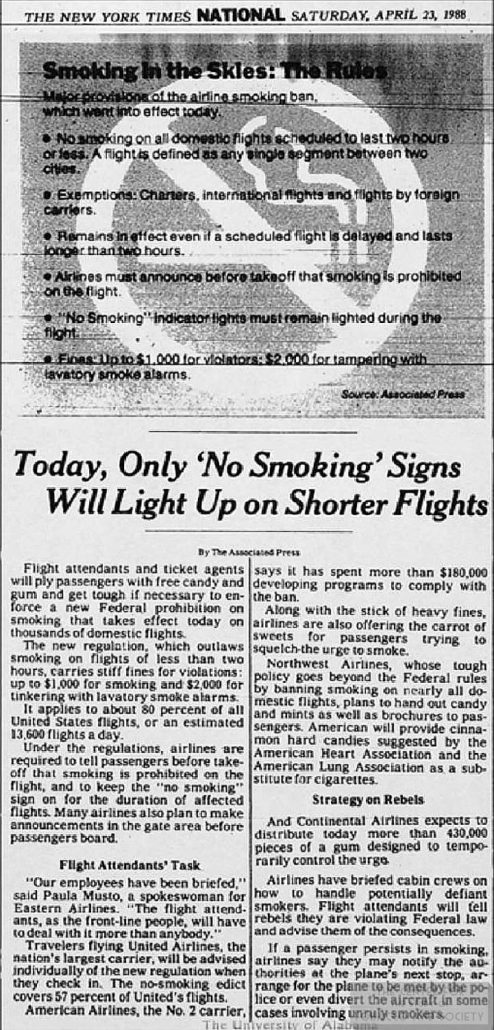After the war, images of airlines and smoking were seen together world-wide. By the 1950’s, virtually all of the world’s airlines permitted smoking and distributed complimentary cigarettes.
In spite of the growing recognition of the harmful effects of smoking in the l 960’s and l 970’s, airlines made little eft’ort to protect non-smoking travelers. By the 1980’s, the failure of adjustable non-smoking sections to diminish cabin air pollution motivated a handful of flight attendants in the U.S. to lobby Congress for the eradication of smoking aloft. The tobacco industry attempted to subvert these efforts by creating such terms as “Environmental Tobacco Smoke,” conducting bogus research, and dismissing allegations of harm from secondhand smoke as hysteria.
In the 1990’s the quest by flight attendants for legal redress for harm suffered from occupational exposure to tobacco smoke resulted in the largest class-action settlement in the history of tobacco litigation and the creation of the Flight Attendant Medical Research Institute.


